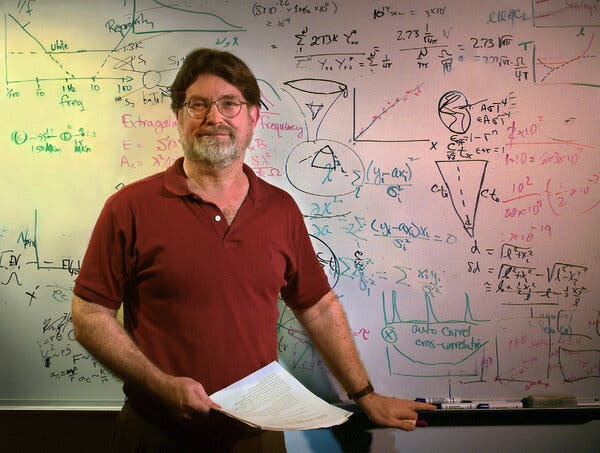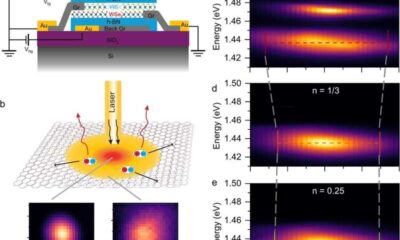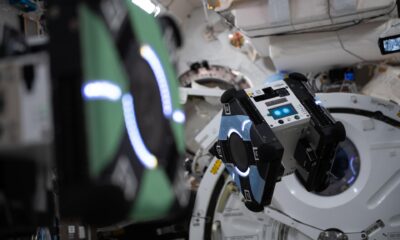Science
George F. Smoot, Pioneering Physicist, Dies at 80 in Paris

George F. Smoot, a celebrated physicist and Nobel laureate known for his groundbreaking work in cosmology, passed away on September 18, 2023, at his home in Paris. He was 80 years old. His death was confirmed by his sister, Sharon Bowie, and attributed to cardiac arrest. Dr. Smoot’s contributions transformed our understanding of the universe’s origins, providing critical insights into the structure and evolution of cosmic matter.
Dr. Smoot became a prominent figure in cosmology while serving as a research scientist at the Lawrence Berkeley National Laboratory and the Space Sciences Laboratory at the University of California, Berkeley. He led a team that developed a highly sophisticated instrument, launched aboard the NASA satellite Cosmic Background Explorer (COBE) in 1989. This mission allowed scientists to capture an image of the infant universe and measure minute temperature variations in the remnants of the Big Bang.
The significance of these temperature variations, detected by COBE, provided evidence of the primordial seeds that eventually formed galaxies and galaxy clusters. Dr. Smoot famously remarked, “If you’re religious, it’s like seeing God,” when discussing the findings that made headlines worldwide in 1992. His announcement at an American Physical Society conference captured the attention of the global scientific community and earned praise from notable figures, including theoretical physicist Stephen Hawking, who described it as “the greatest discovery of the century, if not of all time.”
Transforming Cosmology Through Data
Before Dr. Smoot’s work, cosmology largely relied on theoretical frameworks, often disconnected from empirical data. His collaboration with fellow physicists Arno A. Penzias and Robert W. Wilson, who discovered the cosmic microwave background radiation in 1964, laid the groundwork for a new era of cosmological research. The temperature measurements obtained from COBE provided verifiable data, enabling scientists to explore and test various theories about the universe’s formation and its subsequent evolution.
In recognition of his pivotal role in these discoveries, Dr. Smoot shared the 2006 Nobel Prize in Physics with John C. Mather, another leading figure in the COBE team. Despite his acclaim, Dr. Smoot’s career was not without controversy. Some colleagues felt he often took excessive credit for collaborative achievements. Following the announcement of the COBE findings, a news release from Berkeley Lab was perceived by many as unfairly attributing the discovery solely to Dr. Smoot, overshadowing the contributions of other team members and NASA.
Dr. Smoot chronicled his scientific journey and the events leading up to the discovery in his 1993 book, “Wrinkles in Time: Witness to the Birth of the Universe.” This work, co-authored with Keay Davidson, drew mixed reactions from collaborators, prompting Dr. Mather to publish his account in “The Very First Light: The True Inside Story of the Scientific Journey Back to the Dawn of the Universe” in 1996. Their differing narratives highlighted the complexities and challenges of scientific collaboration.
A Legacy of Education and Outreach
Born on February 20, 1945, in Yukon, Florida, George Fitzgerald Smoot III was the son of George Smoot II, a World War II fighter pilot, and Talicia Smoot, an educator. The family moved frequently due to his father’s career as a hydrologist, which fostered Dr. Smoot’s early interest in science and exploration. He earned degrees in physics and mathematics from the Massachusetts Institute of Technology in 1966 and completed his Ph.D. in particle physics in 1970.
Dr. Smoot’s early career included developing an instrument for measuring temperature differences in the cosmic microwave background, initially tested aboard a U-2 spy plane operated by NASA. This experimentation indicated the Milky Way’s movement through space, leading to further inquiries into the universe’s structure.
In 1994, Dr. Smoot became a professor at Berkeley and later established the Berkeley Center for Cosmological Physics, donating a significant portion of his Nobel Prize funds to its creation. He continued his commitment to cosmology by helping establish research institutes globally, including in France and South Korea. In 2009, he joined the faculty at Paris Cité University, remaining an influential figure in the field.
Dr. Smoot was also dedicated to public outreach and education. He developed programs for high school teachers and students to inspire interest in cosmology and taught an online course about gravity that attracted over 87,000 participants. His appearances on popular media, including the CBS sitcom “The Big Bang Theory” and the game show “Are You Smarter Than a Fifth Grader?” further showcased his passion for science communication.
He married Maxine Bixby in 1969, but the couple divorced ten years later. Dr. Smoot is survived by his partner, Nóra Csiszár, and his sister, Sharon Bowie. His legacy as a pioneer in cosmology and a passionate educator will continue to inspire future generations of scientists and enthusiasts alike.
-

 Technology5 months ago
Technology5 months agoDiscover the Top 10 Calorie Counting Apps of 2025
-

 Technology3 weeks ago
Technology3 weeks agoOpenAI to Implement Age Verification for ChatGPT by December 2025
-

 Health3 months ago
Health3 months agoBella Hadid Shares Health Update After Treatment for Lyme Disease
-

 Health4 months ago
Health4 months agoAnalysts Project Stronger Growth for Apple’s iPhone 17 Lineup
-

 Health4 months ago
Health4 months agoErin Bates Shares Recovery Update Following Sepsis Complications
-

 Technology5 months ago
Technology5 months agoDiscover How to Reverse Image Search Using ChatGPT Effortlessly
-

 Technology3 months ago
Technology3 months agoElectric Moto Influencer Surronster Arrested in Tijuana
-

 Technology5 months ago
Technology5 months agoMeta Initiates $60B AI Data Center Expansion, Starting in Ohio
-

 Technology2 months ago
Technology2 months agoDiscover 2025’s Top GPUs for Exceptional 4K Gaming Performance
-

 Technology5 months ago
Technology5 months agoRecovering a Suspended TikTok Account: A Step-by-Step Guide
-

 Health5 months ago
Health5 months agoTested: Rab Firewall Mountain Jacket Survives Harsh Conditions
-

 Lifestyle5 months ago
Lifestyle5 months agoBelton Family Reunites After Daughter Survives Hill Country Floods





















